Last Updated on March 14, 2024 by Jo Fitzsimons
Our travel content is reader supported. We may earn a small commission from links in this article (no cost to you).
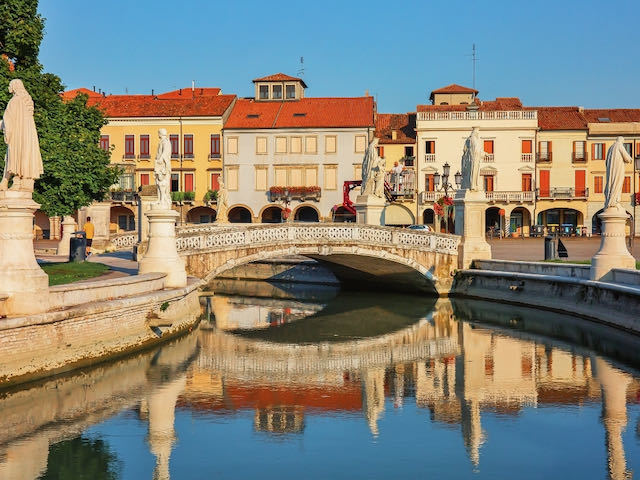
Padua may not be as well known as many other Italian cities, such as Venice, Verona, Treviso or Bologna, which is one of the reasons you should put Padua on your list of things to do in Italy. Not only is, Padua is one of the oldest cities in northern Italy, it is home to many world-class sites and attractions.
There are plenty of fantastic things to do in Padua. You can see the frescoes that sparked the Italian Renaissance, walk in the footsteps of Gallelio at the world’s 5th oldest university, and grab a coffee at one of Italy’s most famous coffee shops. Plus so much more.
So whether you’re planning a day trip from nearby Venice or Verona, or using the city as a base for a few days, here are our suggestions for the best things to do in Padua.
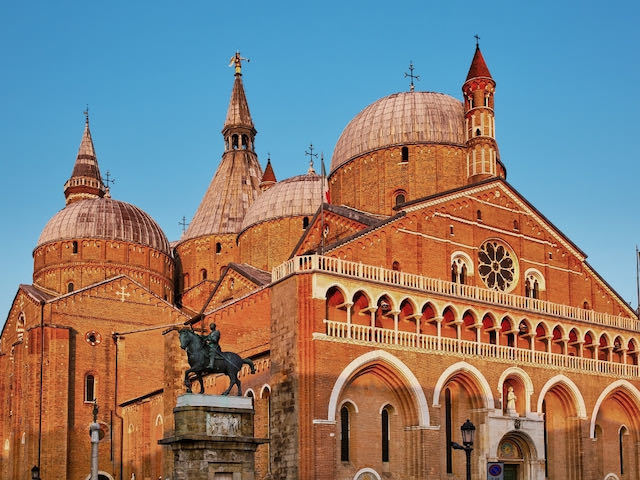
1. Step inside Saint Anthony of Padua Church
The almighty St Anthony of Padua Church (Basilica di Sant’Antonio di Padova) is Padua’s most important religious site, dedicated to the city’s very own patron saint; St Anthony, also known as ‘il Santo’.
The church is one of the eight international shrines recognized by the Holy See and a renowned place of pilgrimage, with millions of Roman Catholics from all across the world making the journey to Padua each year.
Dating back to the 1200’s, Saint Anthony of Padua Church is a unique mix of architectures, with a bold Romanesque exterior, Byzantine domes, and Gothic and Baroque interiors. Inside the church, you’ll find many beautiful frescoes, colourful artworks and ornate marble statues. Keep an eye out for pieces by famous Italian artists including Donatello and Titian.
As well as being able to explore the stunning chapels and church cloisters, you can also pay a small fee to visit the Museum of the Basilica where you’ll be able to learn more about the life and work of St Anthony.
2. Take a tour of the University of Padua
Established in 1222, the University of Padua is the second oldest university in Italy, after Bologna, and the fifth oldest in the world. The university was actually established by a group of scholars and professors from the University of Bologna who wanted more academic freedom.
The University of Padua was also the first university in the world to award a PhD to a woman. In 1678, Elena Lucrezia Corner Piscopia graduated from Padua University with her philosophy doctorate.
Palazzo Bo (The Bo Palace) is the main campus of the university, located in the historical city centre of Padua. The main courtyard, with its many amazing frescoes, is free for anyone to visit, however, a tour of the university will allow you to see so much more.
On a guided tour of the university, you can discover even more of the 800-year-old campus, including several of the grand halls where countless scientific discoveries have been made, the world’s first permanent anatomic theatre, and the desk where Galileo Galilei once taught as a professor in the early 1600s.
3. Explore Padua’s Botanical Gardens
Founded in 1545, The Orto Botanico di Padova is the world’s oldest academic botanical garden still in its original location. It is often referred to as the original botanical garden, paving the way for the hundreds of gardens found all over the planet today.
Padua’s Botanical Gardens were opened by the Venetian Republic for the purpose of growing medicinal plants. Since its founding, the gardens have been linked to the University of Padua and used in the study of botany, medicine, pharmacology, ecology and many other disciplines.
Today, the beautiful gardens are a UNESCO World Heritage Site and open daily for the public to visit. You can explore the two main areas, the historical garden and the biodiversity garden, which combined are home to an amazing 7,000 botanical species.
4. Wander around huge Prato della Valle
Continuing on with Padua’s list of impressive achievements, the city is also home to the largest piazza (town square) in all of Italy. Prato della Valle measures an impressive 90,000 sq meters in size, with a grassy island in its centre known as l’Isola Memmia and 78 statues representing the city’s most famous residents.
No matter when you visit, Prato della Valle is always bustling with locals enjoying an afternoon stroll or letting their kids run around in the sunshine. Regular events and markets also take place in the piazza throughout the year, so you never know exactly what you’re going to stumble across.
Related: Prosecco Calendar – Italy’s National Holidays & Prosecco Events
5. Take a Burchiello cruise along the Brenta Canal
The Brenta Canal is a scenic waterway that links Padua with Venice on the coast. The area lining the banks of the canal is known as the Brenta Riviera and is famous for its grand Venetian Villas and stunning countryside. Many of the lavish villas were once the summer residencies of the Venetian noblility in the 1700s.
The best way to travel along the Brenta Canal from Padua is by Burchiello. The Burchiello was once the traditional wooden Venetian barge used by the wealthy to reach their villas on the Riviera. Today, Burchiello’s have been upgraded into modern, comfortable boats that cruise along the canal.
A full-day mini-cruise will take you all the way to Venice and back. Many cruises also include stops and guided tours of some of the villas along the Riviera, such as Villa Foscari, Villa Widmann and Villa Pisani. You can book a boat cruise here.
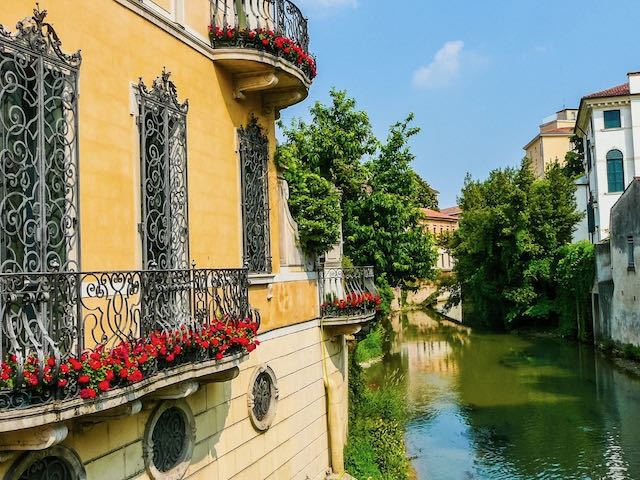
6. Shop at Padua’s 800-year-old market
While you might expect many of the buildings and landmarks in Padua to be over 800 years old, it’s probably a little more surprising to find out that the daily market has been a staple in the city for just as long.
Taking place every morning from Monday to Saturday across Piazza delle Erbe and Piazza delle Frutta, Padua’s main market has been running for over 8 centuries. The current market sells everything from fresh produce to clothes, household items and antiques.
The morning market is definitely a must-visit attraction in Padua. There are also numerous cafes and restaurants surrounding the lively squares for you to stop for a morning coffee or spot of lunch while overlooking the bustling market.
Plus, don’t forget to check out Padua’s imposing medieval town hall, Palazzo della Ragione, which sits in between the two squares and acts as a backdrop to the sprawling market.
7. See the astronomical clock in Piazza dei Signori
Piazza dei Signori is another important square in Padua that is certainly worth visiting. The historic square was once the living and working headquarters of the rulers (signori) of Padua, hence the many impressive buildings.
The piazza is centred around Torre Dell’Orologio (the clock tower) and its 24-hour astronomical clock that tells the time, date and position of the Sun in the Zodiac.
Many things make this clock special. The first being that it is one of the oldest clocks in the world still in working order, having been built in 1344. Another unusual thing about this clock is that only 11 of 12 zodiacal signs are depicted, with Libra being the missing sign. This supposedly comes from the pre-Roman Zodiac system, in which Libra was incorporated into the Scorpio constellation.
8. Admire the frescoes of the Scrovegni Chapel
The Scrovegni Chapel (Cappella degli Scrovegni) is a small and somewhat understated (from the outside) church in Padua that would be all too easy to pass by without knowing the wonders that await you inside.
The 14th-century church is considered to be home to the most complete series of frescoes by renowned Italian painter Giotto. The beautiful frescoes depict stories from the bible, including the life of the Virgin Mary and Jesus Christ. Truly a masterpiece, many art historians believe that it was Giotto’s work on the Scrovegni Chapel that sparked the Italian Renaissance.
There are many amazing things to see in Padua, but no visit to the city would be complete without admiring the frescoes of the Scrovegni Chapel. However, the chapel can only be visited on a guided tour and is extremely popular, so it’s important to book your tickets well in advance.
9. Visit Padua Cathedral, Baptistery & Diocesan Museum
Piazza Duomo is another of the most important places to visit in Padua, being home to three major landmarks; Padua Cathedral, the Baptistery and the Diocesan Museum.
While not quite as impressive as the Saint Anthony of Padua Church from the outside, Duomo di Padua is still one of the most important landmarks in Padua. The original cathedral dates back to 1117 but had to be mostly rebuilt after an earthquake destroyed it.
Right next door to the cathedral, you’ll also find the Baptistery of Padua, which is filled with more amazing frescoes created in the 14th century by talented Italian painter Giusta de Menabuoi, a student of Giotto.
Finally, completing the trio of buildings on Piazza Duomo is the Diocesan Museum. Set inside the former 15th-century residence of the Bishops of Padua, the museum houses the city’s most established collection of religious art.
10. Stop for a coffee at Caffe Pedrocchi
Known as ‘the cafe without doors’, Caffe Pedrocchi is one of Italy’s most famous coffee shops, which from 1831 until 1916 was open 24/7 and its doors were never closed – hence the nickname.
Sat just across the road from the Univesity of Padua’s Palazzo Bo, the cafe has been the meeting spot of countless important academics, intellectuals, writers, and artists over its almost 200 years. It has also hosted many notable parties and events, including elegant academic balls.
Although the cafe does now have closing hours, it’s still one of the best places to stop in Padua for a proper Italian coffee and delicious pastry. Be sure to try the cafe’s speciality, Caffè Pedrocchi, which is a shot of 100% Arabica coffee with mint flavoured cream and a sprinkle of cocoa powder. (Want the lowdown on ordering coffee in Italy, read this).
The historic cafe is also known for its many different themed rooms, such as the Egyptian room, the Greek Room, the Roman hall, and the Renaissance room, which can be found upstairs on the ‘Piano Nobile’ (Noble floor). On this floor you’ll also find the Museum of the Risorgimento and of the Contemporary Age, outlining the history of Padua and the historical importance of the cafe, which you can visit for a small fee.
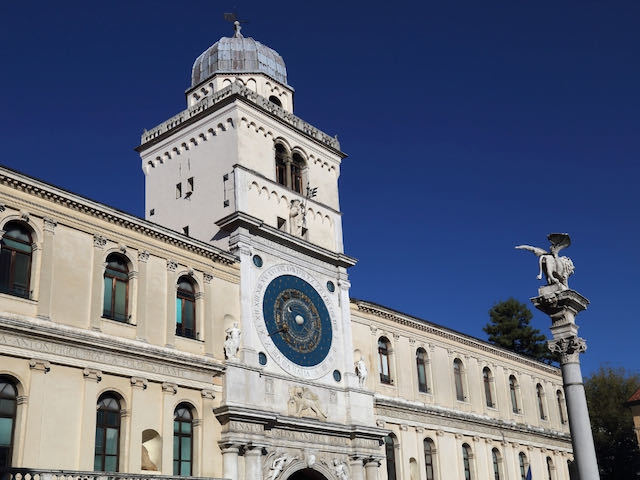
11. Enjoy Padua’s food scene
Like all of Italy, Padua is a city that takes great pride in its food, with most dishes being prepared using fresh, locally-sourced ingredients from the Veneto and Emilia-Romagna regions.
But what food is Padua known for exactly? There are several typical local dishes in Padua you can try:
- Risotto con i Rovinassi – risotto with chicken livers.
- Oca in onto Padovana – goose meat preserved in goose fat.
- Gran bollito alla Padovana – mixed boiled meat, a favourite dish of Gallelio.
- Bigoli – the most traditional pasta in Padua, often served with duck sauce.
- Pazientina Padovana – a layered cake consisting of almond shortcrust pastry, soft sponge and chocolate.
And there’s certainly no shortage of great places to try these local dishes in Padua, with an abundance of fantastic food markets, cafes and restaurants all across the city.
Some of the best places to eat in Pauda are:
- Sotto il Salone – a covered market on the bottom floor of Palazzo della Ragione which is home to many of the city’s best cafes, butchers, cheesemakers, bakeries, pasta makers and other food stalls.
- Pasticceria Graziati – one of the oldest patisseries in the city, famous for its pazientina cake.
- Al Duomo – for some of the best pizza in Padua.
- Fuel Ristorante in Prato – luxury restaurant serving creative takes on authentic local dishes.
12. Stay in a 14th-century wine tower
If you decide to base yourself in the city for more than a day, treat yourself to a stay in one of the most unique hotels in Padua.
Massimago Wine Tower is a charming B&B set inside an ancient tower dating back to the 1300s, surrounded by a centuries-old park right in Padua’s historic centre. The tower’s large suites feature antique furnishings and beautiful frescoes adorning each wall. You can book a room here.
What’s more, you can also organise a wine tasting of Massimago’s self-produced Valpolicella wines during your stay. The ultimate Padua hotel for wine lovers.
Related: 10 Top Italian Wines You Need To Know | How To Choose The Best Prosecco – 10 Top Tips | Prosecco vs Champagne: What’s The Difference?
13. Take a day trip to Venice
With Padua’s close proximity to Venice, the two cities can easily be incorporated into one trip.
Take a stroll around the picturesque canals, admire the architectural wonders of St Marks Square, visit the grand Doge’s Palace and stop for a spritz in one of the charming little piazzas.
Visiting Venice? Check out these related guides:
- 21 Most Popular Places to Visit in Venice, Italy
- 10 Things NOT To Do in Venice (and 10 To Do Instead)
- The best restaurants in Venice – tried and tested
- How to spend one day in Venice
14. Take a Prosecco Tour
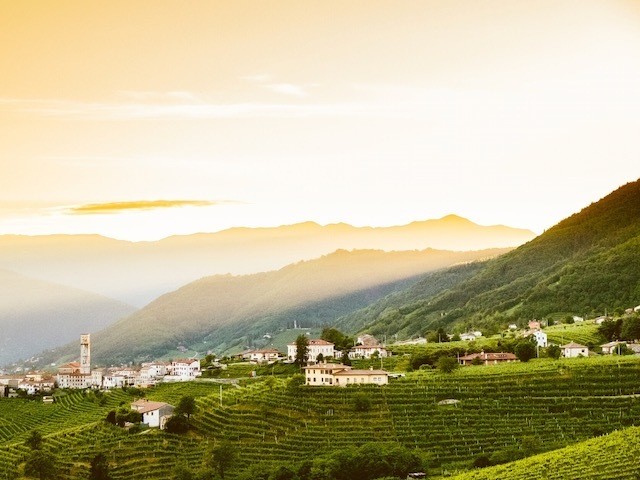
While visiting the Veneto region, don’t miss the chance to sip on prosecco in the gorgeous Prosecco hills.
The Prosecco hills are the historical region between the towns of Valdobbiadene and Conegliano, around an hour north of Padua. The region is filled with beautiful rolling vineyards and family-run wineries where they produce the highest quality Prosecco in the whole of Italy – Prosecco DOCG.
It’s easy to visit the region by booking a half day or full day Prosecco tour. Not only will you tour the wineries, learn about the winemaking process, taste plenty of quality Prosecco paired with delicious locally produced cheeses, you can visit the region’s unique Prosecco vending machine perched on the top of a hill in the middle of the vineyards.
15. Take a sightseeing tour of Padua
If you’re interested in an introduction to Padua, the city has a Hop On Hop Off Bus that will take you to many of the sights on this list of things to do in Padua. Not only will the bus help you get a good overview of the city, your ticket typically includes a booklet with money off many admission prices.. You can book bus tickets here.
How to get to Padua
Where is Padua?
Padua is a city in the Veneto region in the northeast of Italy.
Getting to Padua by plane
The nearest airport to Padua Italy is Venice Marco Polo Airport around 20 kilometres east of the city. There are regular buses and trains that connect Padua to the airport. Related: Guide to Flying with Wine.
Getting to Padua by train
Padua is easy to reach by train from many other nearby Italian cities.
The train from Venice to Padua takes 30 minutes on average – but can take as little as 15 minutes by high-speed train – and costs just €3.60 when booked in advance. This makes it easy to visit Padua in a day from Venice.
The train from Verona to Padua also runs regularly every day, taking between 45 minutes and an hour and costing as little as €7.60.
Trains from Bologna to Padua also take around an hour and cost €9.
So, that’s our guide to things to do in Padua. Got any questions, let us know in the comments below.
Check out our other guides to visiting Italy and Italian Wine
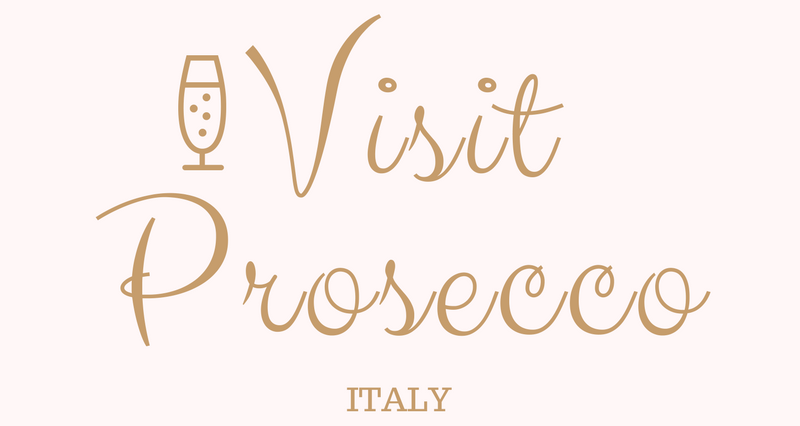
I’d like to tour the astronomical clock. May I book tickets with your company?
I don’t see a link.
Hi, I’m afraid this is just a travel guide for Padua so we don’t sell tickets for the clock. Hope you have a great trip.
great travel guide!
You’re welcome. Happy travels!